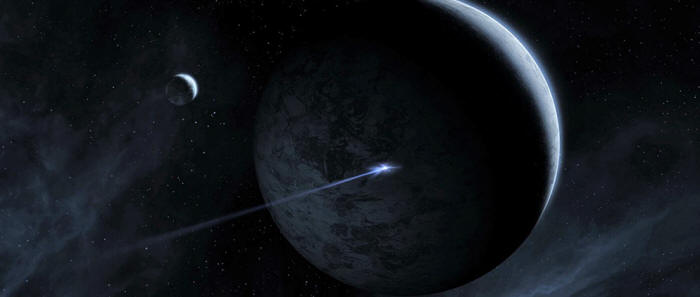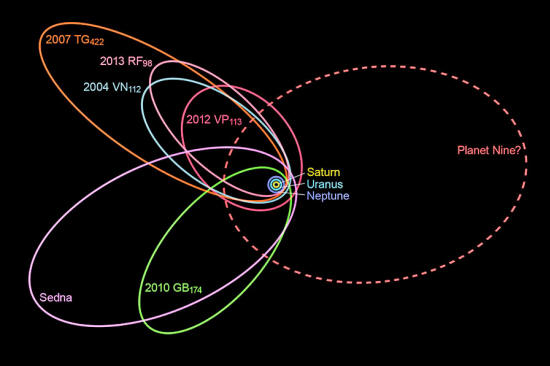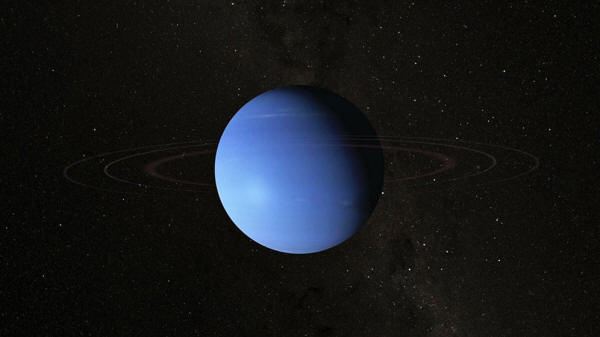|
from Medium Website
Planet Nine (ex-Planet
Ten or X) is a planet predicted to be about 10 times the
mass of our Earth orbiting somewhere in the distant solar system. It
was predicted back in '2014' and we have been finding more and
more confirmations of it in our solar system ever since.
A cluster of these objects have been observed with identically shaped orbits that all travel in the same direction rather than having the random orbits we expect them to.
The orbits are also tilted away from our own under what seems like the influence of a larger source of gravity.
While there is a 1 in 14,000th chance that this could be a coincidence, scientists agree that with the increasing amount of evidence, it is extremely unlikely that this is all random.
The most compelling
solution, by far, is the existence of this ever elusive Planet
Nine. The Kuiper Belt itself can't be the cause of these
anomalies since it would have to be 100 times larger to have that
effect on this cluster of objects.
This means that their orbits come into contact with one another and are in sync but the planets and objects themselves never touch.
would affect the orbits of the cluster
of
Kuiper Belt objects.
With the introduction of this new world, it might come to light that it's actually the planets which are tilted and not the sun.
A collision early on in the formation of our solar system could have caused Planet Nine's orbit to tilt away from the orbits of the other planets, thus resulting in a tilt in our entire system to compensate for the difference.
Computer simulations
place the orbital tilt of Planet Nine at 30 degrees, a number which
fits perfectly with the current observations we have of our own
planets' orbits.
Our old geocentric model of the solar system that put Earth at the center was accepted for over 1,000 years before being replaced by the heliocentric model in the 17th century.
And yet the geocentric
model was still accurate in predicting cycles of the sky, the
seasons, anything we needed at that point in time for life and
agriculture.
So many astronomers in the 1800's noticed this that by the time Neptune was found in 1846, nobody could decide who had really made the discovery.
Similarly, anomalies in the orbits of Neptune and Uranus led to the discovery of the dwarf planet Pluto in 1930.
The calculations for Neptune's discovery had been so precise that it was found less than one degree from where it was theorized to exist.
Well, we don't know exactly where to look. Unlike with Neptune, we don't have coordinates to where this new planet might be in the huge search area of the distant solar system.
Because it is so far from the sun, it's likely not very visible, either. It's also important where it is during its orbit.
Is it currently close to
the sun, or at its furthest point?
Other theories include
that Planet Nine was actually a rogue planet that was captured by
the gravity of our own solar system, rather than forming alongside
it.
However, it is compelling evidence and it's exciting to think that an entirely new world might be out there for us to discover. Its existence would grant us a more complete picture of our solar system and its infancy.
We would also be able to better predict how often comets reached us and would prompt the question,
|




